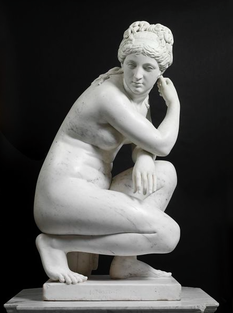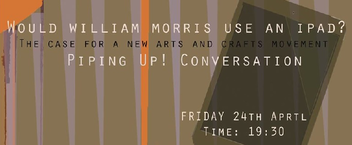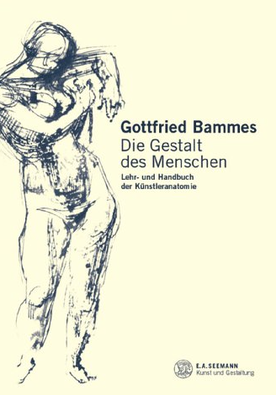 Studies at LARA finished for the Easter holidays a few weeks ago. After a few days R&R, I got down to some 'holiday homework'. A wickeder invention to bedevil children could hardly be imagined; the harbinger of drudgery and adventures postponed. Paradoxically, on returning from holidays you were expected to write at length about all the jolly capers you got up to. Presumably this was intended as an exercise in fiction, since most of the time was spent learning sodding French verbs. Anyway, for what it's worth, here's what I did during my holidays. My first project was to take out my whizzy new Soltek plein air easel for a spin. I decided to go all Gray's Elegy and do a landscape featuring a country churchyard. Sadly, the two days I spent on this didn't result in anything very pleasing - so I've put that one down to experience and will try again when the weather and light are more reliable and do some preparatory drawings first. It turns out that painting gothic tracery is really rather difficult. Second on my to-do list, was to take the figure drawings from Charles Bargue's Cours de Dessin and produce flayed drawings showing the bones and musculature on tracing paper. I found this a very useful exercise in terms of understanding why the Bargue figure drawings manage to be so simple but effective. The few angle breaks in the contour and the small well chosen landmarks within the figure relate to key anatomical features - and that's what makes them 'work'. To supplement this, I also did life-sized drawings of the skeleton in front and profile views, using Struttura Uomo and done on a roll of wallpaper lining. Possibly less useful and certainly more time-consuming were some colour study exercises that I carried out. The jury's out on whether they'll be put to use, but my plan was to take a relatively full palette of colours and mix each one with each of the others in a ten-step sequence. I plumped for Cremnitz White, Ivory Black, Yellow Ochre, Raw Umber, Light Red, Cobalt Blue, Naples Yellow, Cadmiums Yellow and Red plus Alizarin Crimson. In retrospect, ten divisions was more than I really needed - resulting in having to make 450 separate mixes (and taking the best part of a week). My plan is to bind them into a booklet and keep it in my studio as a reference. Will it gather dust or be my next indispensable studio aid? Needing a break and a dose of inspiration, I took a trip to the V&A to draw from their sculptures. I did a few fairly passable drawings, including the figure shown above. For some reason, though, I find my drawing begins to fall apart when I start adding the values. I suspect it's because I begin hurrying at that point, when I ought to be slowing down. However, it was worthwhile visit and I've got in mind going on a regular basis. Now I look at it, I'm pretty pleased with what I've got done over the break. Next on my to-do list are some portrait drawings and some alla prima still life paintings. That may have to wait for the summer because it's almost time to get back to class. Here's hoping the my efforts weren't in vain and they'll pay off next term.
0 Comments
 For those interested in the Arts and Crafts movement and the recent revival of interest in traditional crafts, this event should be really interesting. I'm a particular fan of Tom Hodgkinson, whose book - How to be Idle, I read some years ago whilst being very idle indeed on a beach in the Maldives! Would William Morris use an iPad? 24 April at 7.30 pm The Conservatoire, Blackheath The Arts and Crafts movement was a response from William Morris and others on the edge of the Pre-Raphaelite movement against the rise of manufacturing, which they felt was soulless, lacked aesthetic and trapped people in poverty. They venerated artisan and traditional techniques, a simpler rural life and were social revolutionaries. In the wake of recession, the rise of digital technology and 24/7 marketing, modern communities are reacting by forming farmer's markets and hosting kitting bees, while 'low' lifestyle books are flying off the shelves. Are we seeing the beginnings of a new arts and crafts movement, and if so what does that look like in the age of the iPad? The three speakers will be: Tom Hodgkinson, editor of The Idler website and contributor to The Sunday Telegraph, The Guardian and The Sunday Times. Jan Marsh is current President of The William Morris Society and a biographer and curator, and a trustee of the William Morris Gallery in Walthamstow. Jane Burton, former Head of Content and Creative Director, Tate Media and now at Christies! This is a free event, Reserve tickets here.  For anyone interested in figure drawing, Gottfried Bammes is an excellent author and there are a couple of his books available in English. However, these books contain only selected highlights from his more detailed work, Die Gestalt des Menschen, which is only available in German (and at rather a high price). Fortunately, there is an online resource which contains all of the various drawings from this larger work, without the text (which is useless to me anyway since I don't speak German!) I'd highly recommend it to anyone looking for a way of simplifying and understanding the key structures of the human form. I have a copy printed out, which I keep in my studio. It is probably the resource on anatomy that I refer to more than any other. You can access the images from Die Gestalt des Menschen here. |
Ben Laughton SmithContemporary works of art in the classical tradition. Archives
March 2021
Categories |
Proudly powered by Weebly
 RSS Feed
RSS Feed